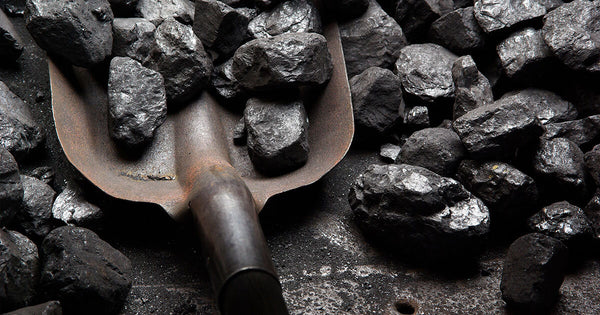The Importance of Quality Carbon in Ethanol Extracts
Jun 18, 2021
Activated carbon, also known as activated charcoal, is one of the most powerful and efficient filter medias used to remove color from crude cannabis extracts. Dark brown and green colors can be remediated with the right type of activated charcoal and optimized SOPs.
While the filter media can do wonders for extracts of any quality, in certain cases, it can actually work against the quality of the extract and throughput in an operation. Choosing a quality carbon material can offset most common filtration challenges to achieve a near-perfect carbon scrub.
What Is Carbon Scrubbing and Why Is It Necessary?
Carbon scrubbing refers to the color remediation process in which an activated charcoal filter is used to remove undesirables from the crude extract. Cannabis processors may use an array of filter media such as diatomaceous earth, silica gel, and activated bentonite clay to enhance the overall filtration.
Carbon scrubs, in particular, can remove the following undesirables from a crude extract:
-
Plant pigments
-
Lipids and Waxes
-
Chloropyll
In the end, cannabis processors end up with extracts with higher clarity and a better taste.
For the purification of distillate after ethanol extraction, scrubbing the crude extract of the dark pigments with carbon is an especially effective filtration solution.
Room-temperature or warm ethanol as a solvent has the capacity to co-extract pigments such as chlorophyll during the extraction process more so than cold ethanol or other extraction methods that use hydrocarbons or carbon dioxide as a solvent.
Scrubbing the crude oil with a filter media can reduce the dark color (chlorophyll) from ethanol-based extracts. That is why it can become a crucial step in the ethanol extraction workflow.
Carbon scrubbing becomes necessary to remediate the color and taste to end up with a pure cannabis distillate without any undesirable compounds. Choosing the right type of activated carbon product becomes an essential factor to the outcome of the plant extract.
Activated Carbon Quality Matters
In any ethanol extraction workflow, carbon can become an indispensable tool for the decolorization of crude oils. In a worst-case scenario, however, this filter media can wreak havoc on the potency, flavor, and yield of the filtered extracts, not to mention the safety of the operator.
Poor-quality carbon and improper standard operating procedures can present demoralizing challenges during ethanol extraction. One of the most gut-wrenching drawbacks of using this filter media is the isomerization or destruction of desirable cannabinoids such as THC and CBD.
A lackluster filter media and/or a poor workflow and operator error can end up in thousands of dollars worth of wasted cannabis extract. Manufacturers can avoid producing low-potency distillate by investing in quality carbon that will not negatively affect the yield or potency of ethanol-based extracts.
Types of Activated Carbon
Carbon has proved itself an impressive adsorbent material across a broad range of industries. It is used in everything from municipal water treatment to precious metal recovery and so much more. All activated carbon, however, is not created equal.

One of the defining factors of this media can be its source. Activated charcoal can come from a variety of high-carbon sources including:
-
Wood
-
Bamboo
-
Coconut husk
-
Coal
-
Peat
When activated through a chemical or physical manufacturing process, the activated form becomes highly porous and has a large surface area. In its many forms, carbon has a broad range of pore sizes including big cracks and crevices down to micropores not visible to the naked eye.
The effectiveness of the filter media at filtering the undesirable compounds depends largely on the source of the material, manufacturing process used, ease of use, and carbon content. Of course, special production techniques can produce carbons that improve the adsorption capabilities of the filter media, despite the normal pore structure of the raw material.
Ethanol extraction companies that require a high-efficacy filtering product can choose from three main types of this filter media.
Granular Activated Carbon

In its granular form, this filter media comes in irregular-shaped particles ranging in size from 0.2 to 5 mm.
Powdered Activated Carbon
This material can be derived from a granular version and comes as a dry and pulverized powder. In this form, its size is less than 0.18 mm.
Activated Carbon Sheets
Activated carbon sheets blend a powdered form of this filter media (and sometimes others such as diatomaceous earth) and cellulose fibers to create a filter sheet with superior adsorptive qualities.
Advantages of High-Grade Carbon
When performing ethanol extraction for the production of distillate, using a high-grade of this filter media is a critical component toward creating consistent and pure products that are safe and easy to use.
No Degradation of Cannabinoids

In some cases, low-grade filter media can actually degrade cannabinoids such as CBD and THC. Essentially, the oil’s overall potency can be reduced. Filtration should never come at the cost of reduced cannabinoid strength. Lower potency can ultimately lower a company’s bottom line and produce inconsistent batches of extract.
However, top-notch filter media in ethanol extractions can actually increase potency of the desired cannabinoid in the distillate. The best filter media for ethanol can aid in the removal of chlorophyll without adsorbing active compounds such as THC and CBD that are the foundation of a pure distillate.
Safe to Use
With some dry and loose forms of activated charcoal powder, personal protective equipment (PPE) is recommended to reduce the safety hazards associated with the inhalation and exposure to the fine powder. Common PPE used in this filtering process includes:
-
Safety glasses
-
Lab coat/overalls
-
Respiratory mask
-
Protective gloves
Quality filter media such as activated carbon sheets immobilize the carbon within cellulose fibers to create a product that will not lead to dust formation and completely eliminates the risk of harmful exposure to the operators.
On top of using quality filter media, using the proper PPE, optimized SOPs, and having the right technician training can significantly reduce the safety risk to operators.
Easy to Handle
In the production of the filter media, sometimes, the process can leave behind residual acids and bases in the product. In this case, cannabis processors must rinse the filter media before filtering the oil to help wash the residual materials away and avoid them from contaminating the distillate oil.
High-quality carbon such as activated carbon sheets do not require any additional preparation such as rinsing to wash away the residual materials. All an operator has to do is properly pack the filter media inside the color remediation equipment for streamlined operation and increased throughput.
No Leaching
Low-grade filter media can leach very small particles of carbon into the filtered extract requiring a sub 1 micron filter to remove these microscopic particles from the oils. The smaller the micron size the better filtration of the contaminated material there will be.
With high-grade filter media, cannabis processors do not have to worry about leaching carbon into the ethanol extract. Small particles will not end up in the final product, thereby, giving oil processors peace of mind knowing they are producing an overall better extract.
Filter Media Sample Request
Interested in trying our filter media? We would love to send you some! Browse our products, then fill out this form and someone from our team will be in touch to finalize your request.
Better Color
Most importantly, high-quality activated carbon goes above and beyond in terms of color remediation compared to a standard filter media. After all, that is the ultimate goal in processing crude extracts through filters with high absorptive capabilities.
When selling distillate in bulk to suppliers or as consumer packaged goods to customers, color is often seen as a reference point when determining the quality of the extract. Of course, color is not the only factor that determines the purity of a cannabis distillate oil but it is the most obvious.
Essentially, using high-quality carbon can be the difference in creating an average oil and a connoisseur-grade oil with a great jar appeal.
Quality Filter Media from Media Bros
Ethanol extraction aside, filter media is widely used in BHO and CO2 extraction processes. For BHO and CO2 processors who want filter media with the highest adsorptive properties, Media Bros delivers a line of filter media that is easy to use, safe, and can handle a high-flow.
As an alternative to activated carbon for filtration of pigments, natural zeolite offers numerous advantages. Zeolite can offer a longer life-span, high purification rate, and low operating costs in the removal of chlorophyll and other unwanted pigments.
-
CRX: For BHO extraction, CRX removes unwanted colors from oil
-
CRY: An aggressive CRX for stubborn colors
-
CR2: CR2 eliminates colors and the bitter taste of CO2 extracts
Media Bros understand the common challenges associated with using filters that can end up hurting the process. That is why Media Bros has been dedicated to creating a ready-to-use solution for the color remediation of oil.
If you want to remove the green or brown hue from your oil without losing out on valuable terpenes and cannabinoids, contact us for more information about our products and services. The right filtration media can make all of the difference.







